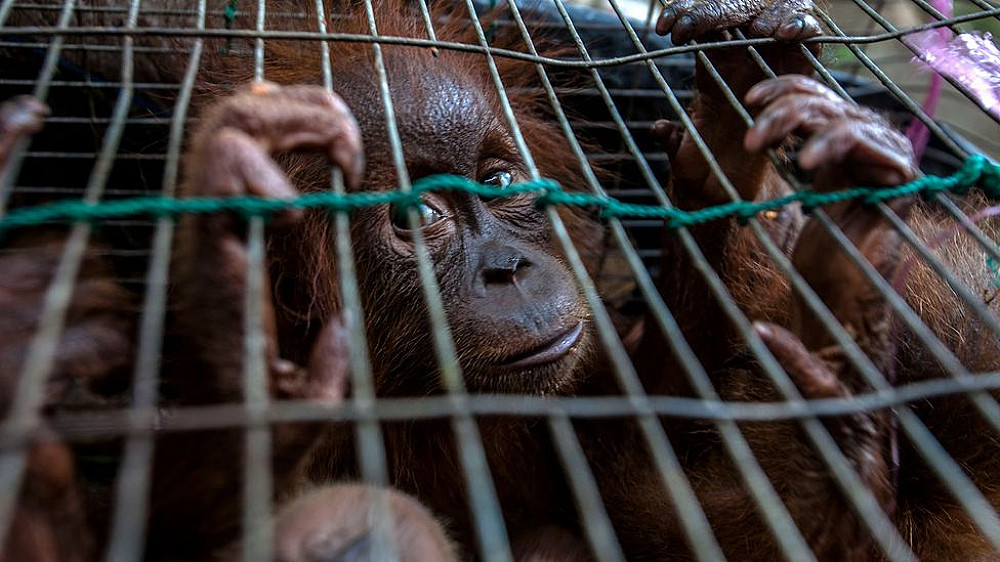As global demand for the meat grows rapidly with an increasing population, overhunting becomes an issue of high importance, threatening biodiversity and food security around the world. Extinction and endangering of species, disrupting migration and hibernation, affecting the food chain are only some of the consequences caused by overhunting. It also impacts the accuracy of official capture of animal species as catches are not officially registered.
Overhunting is damaging tropical forests. Deforestation and forest degradation have long been considered the most significant threat to tropical biodiversity. Many trees in tropical forests, rely on animal to disperse their seeds. Many tree species would not be able to maintain a viable population without the long-range distribution of seeds by animals. According to the “European Wilderness Society”: “Tropical forests are increasingly degraded by industrial logging, urbanization, agriculture, and infrastructure, with only 20% of the remaining area considered intact.” Notably, more than half of the tropical forests area is located within 10 km of the nearest human settlement, and over 80% is withing 20 km. This means that majority of the tropical forest is huntable. As a result, many tropical forests are becoming "empty," with species numbers declining or locally extirpating.
Overhunting leads to overexploitation of natural resources and is aggravated by Illegal hunting. The issue of illegal hunting is a widespread concern happening globally. It is a threat not only to the existence of wildlife, but also to the survival of life on this planet as a whole. Illegal hunting is believed to be a major issue with a variety of motives as well as methods: Hunting outside of the open hunting season, illegal poisoning, illegal destruction of protected habitat and illegal trade of protected species also known as wildlife trafficking, which directly threatens the survival of many species in the wild.
Wildlife trafficking has become highly profitable criminal activity, in many cases, involving organized criminal groups and driven by a massive and growing demand for wildlife products. Interestingly, the trafficking of endangered species attracts highly specialized organized criminal groups (The OCG). The OCGs reported are typically small in size with very few members and exclusively focused on the trafficking of endangered species. Some examples of illegal wildlife trade include poaching elephants for ivory and tigers for their skins and bones. As well as, leopard claws, whiskers and turtle shells. The list does not end here, numerous other species are similarly overexploited. Furthermore, the illegal wildlife trade undermines countries’ efforts to protect their natural resources. Through illegal wildlife trade, governments lose important sources of revenues; while its links with corruption and illicit money flows, for instance through money laundering. At the same time, weak governance structures further facilitate these crimes.
The theft of natural resources deprives many of the world's most marginalized people, particularly indigenous populations, of important chances for sustainable lifestyles, as wildlife products are an important economic sector in many developed and developing countries, either directly or indirectly.
In developing countries, many people entirely depend on the continued availability of local wildlife resources. Fish is often the cheapest form of animal protein and constitutes an important source of nutrients for the poor, especially during times of financial hardship. As stated by the Food and Agriculture Organization of the United Nations (FAO), nearly one billion people worldwide, about 20% of the global population, rely on fish as their primary source of animal protein. One of the significant issues associated with illegal wildlife trade is that it can cause overexploitation of the species. For example, overfishing. Overfishing occurs when fishermen catch more animals than the oceans can sustain, and it is happening worldwide. Simply put, wild fish cannot reproduce as fast as seven billion people can eat them. According to the World Wildlife Foundation (WWF), 29% of the world's fish stocks are overfished, while 61% are fully fished. That is the highest proportion recorded since they began tracking. Overfishing is aggravated by widespread illegal, unreported or unregulated (IUU) fishing. IUU fishing has adverse impact on fisheries, food security and marine ecosystem, and is closely linked to human trafficking and forced labor. It also impacts the accuracy of official fish capture and stock forecasts as catches are not officially registered. Since regulatory bodies use recorded catches and stock estimates to set catch limits and manage fish stocks, this negatively affects the quality of fisheries regulation.
Oddly, the overexploitation of natural recourses may also happen unintentionally, such as incidental killing of non-target species. The process is called bycatching. When fishermen unintentionally catch and discard overboard sea animals they do not want or cannot sell, including dolphins, sea turtles and seabirds that become entangled in fishing gear, leading to ecological and economic issues. Since these unintentionally caught non-target creatures often suffer injuries or die, they cannot reproduce, contributing to food waste and population declines and adversely impacting ecosystems. Bycatch is hard to measure, but it is estimated to kill as many as 720,000 seabirds, 300,000 whales and dolphins, 345,000 seals and sealions, over 250,000 turtles, and more than 1.1 million tons of sharks and rays – many of these species are endangered or on the brink of extinction.
In addition to the impact on human livelihoods, wildlife trafficking targets some highly endangered species. WWF has long been trying to combat the illegal trade and encourage sustainability in the legal trade. WWF is encouraging people to use their local wildlife sustainably as well as is persuading consumers to make informed choices when buying wildlife-based products. Nearly 10 years ago, WWF together with TRAFFIC launched a joint campaign, “Wildlife Crime Initiative”, to make illegal wildlife trade a higher priority on the international policy agenda. The initiative helps tackle the global poaching crisis and unprecedented surge in organized wildlife crime, which threatens the survival of iconic species and undermines national security, the rule of law and sustainable development.
The EU has been actively fighting against illegal wildlife trade, both domestically and globally over the last decade. According to the ec.europa.eu, The EU has provided large scale development support to anti-wildlife trafficking efforts in developing countries. In Africa alone, the EU has committed more than 500 million EUR for biodiversity conservation over the past 30 years, with a portfolio of on-going projects worth approximately 160 million EUR. The EU has been since 2001 the main financial supporter of the MIKE (Monitoring the Illegal Killing of Elephants) programme, with an overall contribution to the CITES Secretariat of 12 million EUR covering 71 sites in Africa and Asia. The European Union is a key player in the Convention on International Trade in Endangered Species of Wild Fauna and Flora (CITES). In addition, the European Commission works closely with the EU Member States to strengthen strict trade rules for endangered species.
According to Europol, unfortunately, despite the strict rules and enforcement, the EU remains one of the most important markets for the trafficking in endangered species and is also a major transit point for illegal trade in wildlife in particular between Africa and Asia. Responding to wildlife trafficking is a global concern and cannot be solved by countries working individually. For our planet to survive, it is crucial to protect our wildlife. When it comes to balancing ecology, all of the species have an important role to play.

